I’ve been on a mission to keep tabs on my health, and the Medline Blood Pressure Monitor has become my go-to tool. If you’re looking for a reliable, user-friendly device to monitor your blood pressure at home, this is the one to get.
It’s accurate, easy to use, and packed with features that make tracking your health a breeze. Whether you’re managing hypertension or just staying proactive, this monitor delivers.
Trust me, you’ll want this in your home to take control of your heart health with confidence.
My Experience With The Medline Blood Pressure Monitor
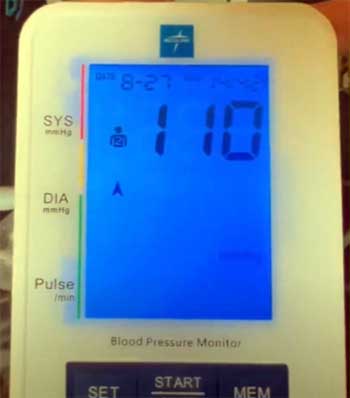
When I first decided to monitor my blood pressure at home, I was a bit overwhelmed by the options out there.
I wanted something reliable, easy to use, and not too bulky.
That’s when I stumbled upon the Medline Blood Pressure Monitor, specifically the MDS4001 model, and let me tell you, it’s been a game-changer.
I’ve been using it for months now, and it’s become a staple in my daily routine.
The first thing I noticed was how straightforward the setup was.
I’m not exactly a tech wizard, so I appreciate anything that doesn’t require a PhD to figure out. The monitor came with clear instructions, and within minutes, I had it out of the box, batteries installed, and the cuff snug around my arm.
The universal cuff fits comfortably, which was a relief since I’ve got average-sized arms, but I know it works for a wide range of sizes. I started taking readings right away, and the large LED display made it easy to see my systolic and diastolic numbers, even in my dimly lit living room.
What really stood out was the accuracy. I compared my readings to those taken at my doctor’s office, and they were consistently spot-on. This gave me confidence that I wasn’t just playing with a fancy gadget but actually getting reliable data.
The monitor also tracks my pulse rate, which is a nice bonus for keeping an eye on my overall heart health. I love that it stores up to 90 readings, so I can look back and spot trends over time. It’s like having a little health diary right on my wrist—or rather, my arm.
The one-push button operation is a lifesaver. I just wrap the cuff, press a button, and let it do its thing. The “measure-during-inflating” technology makes the process quick and less uncomfortable than older monitors I’ve tried, which sometimes felt like they were squeezing the life out of my arm.
I’ve even taken it on trips because it’s compact and comes with a carrying case. Whether I’m at home or on the go, it’s been a reliable companion for keeping my health in check.
Pros of The Medline Blood Pressure Monitor
- Accuracy You Can Trust
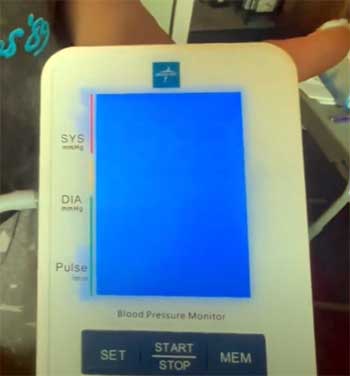
One of the biggest reasons I’m sold on the Medline monitor is its accuracy.
I’ve cross-checked my readings with professional equipment at my doctor’s office, and the numbers are consistently within a tight range.
This isn’t just me guessing—it’s reassuring to know I’m getting data I can rely on to make informed health decisions.
The monitor uses advanced inflation technology that measures during the cuff’s inflation, which not only speeds things up but ensures consistent results. For anyone managing hypertension, this kind of precision is non-negotiable.
- User-Friendly Design
You don’t need to be a tech guru to use this thing, and I love that. The one-button operation is as simple as it gets—just strap it on, press start, and you’re done. The large LED display is a godsend, especially if your eyesight isn’t what it used to be.
I’ve used it in low light, and the backlit screen makes the numbers pop. Even my mom, who’s not a fan of gadgets, found it easy to use when I let her try it. The universal cuff is another win, fitting comfortably on different arm sizes without feeling like a tourniquet.
- Memory and Tracking Features
I’m a bit of a data nerd, so the memory function is one of my favorite features. The Medline monitor stores up to 90 readings, complete with date and time stamps. This makes it easy to track trends and share data with my doctor during checkups.
I don’t have to scribble numbers down or rely on my memory, which, let’s be honest, isn’t always reliable. For households with multiple users, some models, like the MDS3001, store readings for two people, which is perfect if you and a partner both want to keep tabs on your health.
- Portability and Convenience
This monitor is compact and comes with a sturdy carrying case, so I’ve taken it with me on trips without any hassle. It’s not bulky like some older models I’ve seen, and the fact that it runs on AA batteries means I don’t have to worry about finding a power outlet.
The battery life is solid, lasting weeks with daily use. It’s the kind of device you can toss in a bag and forget about until you need it, which makes it ideal for busy folks like me.
- Cost-Effective and Durable
For the price, the Medline monitor punches above its weight. It’s not the cheapest option out there, but it’s far from the most expensive, and the quality feels premium. The build is sturdy, and the cuff material is soft yet durable, holding up well after months of use.
Plus, it comes with a three-year warranty, which gives me peace of mind knowing the manufacturer stands behind it. Compared to my old monitor, which gave out after a year, this one feels like a long-term investment.
Also Read: Should You Try Geekran Smartwatch Glucose Monitor?
Cons of The Medline Blood Pressure Monitor
- Proprietary Charging Cable
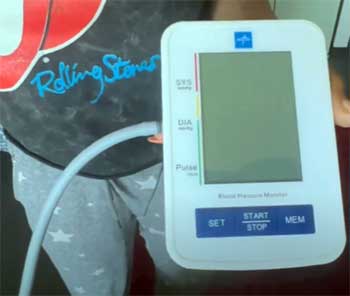
One thing that bugs me is the proprietary charging cable on some models, like the MDS7001B.
In a world where USB-C is basically the standard, it’s a hassle to deal with a unique cable.
If you lose it, you’re stuck ordering a replacement from Medline, which isn’t the end of the world but definitely an inconvenience.
I’d love to see them switch to a universal port to make life easier.
- Limited App Integration
While the Bluetooth connectivity on models like the MDS7001B is great for syncing with the Medline Health App, it doesn’t play nice with broader platforms like Apple Health or Google Fit. I’m someone who likes all my health data in one place, so this was a bit of a letdown.
The app itself is functional, but it’s not as polished as some competitors’. If you’re not tech-savvy, this might not bother you, but for data junkies like me, it’s a missed opportunity.
- Cuff Size Issues for Some Users
The universal cuff is comfortable for most, but I’ve heard from friends with smaller arms that it can feel a bit loose. On the flip side, those with larger arms might find it snug.
While it fits a wide range, it’s not perfect for everyone. If your arm size is on the extreme end, you might need to order a different cuff size, which adds an extra step and cost.
- Occasional Sensitivity to Movement
I’ve noticed that if I move my arm during a reading, the results can be slightly off. This isn’t unique to Medline, but it’s worth mentioning. You need to stay still and keep your arm at heart level for the most accurate results.
It’s not a dealbreaker, but it can be annoying if you’re in a rush or not paying close attention to your posture.
Maintenance Tips For Your Medline Blood Pressure Monitor
- Keep the Cuff Clean
Your blood pressure monitor’s cuff is going to be in close contact with your skin, so keeping it clean is key. I wipe mine down with a soft, slightly damp cloth after every few uses to remove any sweat or dirt. Avoid harsh chemicals like bleach, as they can damage the material.
If the cuff starts to look worn or the Velcro loses its grip, it’s time to consider a replacement. Medline sells compatible cuffs, so you don’t have to buy a whole new unit.
- Store It Properly
I learned the hard way that tossing the monitor in a drawer isn’t the best idea. The cuff can get creased, and the device might get banged up. Instead, I use the included carrying case and store it in a cool, dry place.
Extreme heat or humidity can mess with the electronics, so avoid leaving it in a bathroom or near a heater. This small habit has kept my monitor in tip-top shape.
- Check the Batteries Regularly
The Medline monitor runs on AA batteries, which last a while, but you don’t want to be caught off guard. I check the battery level every couple of weeks, especially if I’m using it daily.
If the display starts to dim or the device acts sluggish, it’s time for a fresh set. I always keep a spare pack of batteries handy to avoid any downtime. If you have a rechargeable model, make sure to charge it fully before it dies to maintain battery health.
- Calibrate and Test Periodically
To ensure accuracy, I compare my monitor’s readings with those from a doctor’s office every six months or so. This isn’t something Medline requires, but it gives me peace of mind.
If you notice consistent discrepancies, it might be time to contact customer support or use that three-year warranty. Also, make sure the cuff is properly aligned and at heart level during readings to avoid false results.
- Handle with Care
This might sound obvious, but treat your monitor like the precision tool it is. I avoid dropping it or letting it rattle around in a bag without the case. The buttons are responsive, but pressing them too hard or too often can wear them out.
By handling it gently and storing it properly, I’ve managed to keep mine looking and working like new.
Comparison of Medline Blood Pressure Monitor With Other Brands
- Medline Vs. Withings BPM Connect
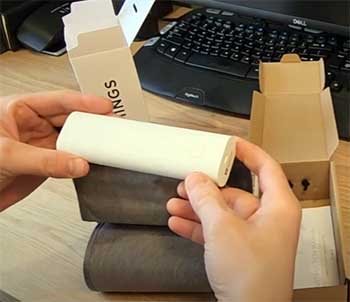
I’ve spent some time with the Withings BPM Connect, and its sleek design immediately caught my eye.
It’s compact, with a cuff that doubles as a carrying case, making it super portable.
The app integration is a standout, syncing seamlessly with Apple Health and Google Fit, which is a step above Medline’s more limited app.
I loved how easy it was to share data with my phone, but the price tag gave me pause—Withings is noticeably more expensive.
The Medline MDS4001, on the other hand, offers comparable accuracy and a backlit display that’s easier to read in low light. While Withings feels more tech-forward, Medline’s affordability and three-year warranty make it a better fit for my budget and long-term needs.
- Medline Vs. Oklar Blood Pressure Monitor
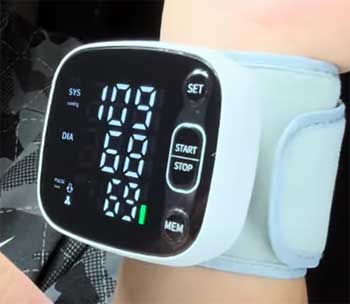
The Oklar Blood Pressure Monitor is another contender I tested, and it’s a solid option for those looking for simplicity.
Its one-button operation mirrors Medline’s, and the readings were consistent when I compared them to my doctor’s equipment.
However, Oklar’s display isn’t backlit, which was a hassle in dim lighting.
The cuff felt less comfortable than Medline’s, especially during longer sessions, and the build quality didn’t seem as durable.
Oklar is slightly cheaper, but it lacks the memory storage capacity of Medline’s 90 readings and the robust warranty. For me, Medline’s extra features and reliability outweigh Oklar’s lower price.
- Medline Vs. Invaxe Blood Pressure Monitor
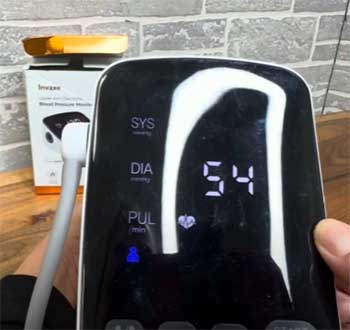
I also got my hands on the Invaxe Blood Pressure Monitor, which markets itself as a budget-friendly alternative with Bluetooth connectivity.
The app was decent, but I found it glitchy compared to Medline’s smoother syncing.
Invaxe’s readings were accurate enough, but the cuff material felt cheap and started to fray after a few weeks.
Medline’s universal cuff, by contrast, is soft and durable, and the device itself feels sturdier.
Invaxe’s battery life was shorter, requiring frequent recharges, while Medline’s AA battery option lasted weeks. If you’re looking for a no-frills monitor, Invaxe might do, but Medline’s overall quality and longevity make it my go-to.
Frequently Asked Questions (FAQ)
Accuracy is the name of the game when it comes to blood pressure monitors, and in my experience, Medline holds its own against the big players like Omron and A&D Medical. All three brands are clinically validated and FDA-cleared, which means they’ve been rigorously tested. I’ve found Medline’s readings to be consistently close to those from my doctor’s office, but Omron often gets the edge in professional settings due to its long track record. It really comes down to how you use the device—proper positioning and staying still are key with any brand.
Pharmacists tend to lean toward brands like Omron and A&D Medical because they’re widely used in clinical settings and have a reputation for reliability. That said, I’ve spoken to a few pharmacists who also recommend Medline for home use, especially for its affordability and ease of use. The MDS4001 and MDS3001 models are popular because they’re straightforward and deliver accurate results. If you’re asking your pharmacist, they’ll likely point you to a validated brand that fits your budget and needs, and Medline often makes the cut.
For home use, I’m partial to the Medline MDS4001 because it balances accuracy, ease of use, and affordability. Its large display, memory storage, and comfortable cuff make it ideal for daily monitoring. That said, if you want more app connectivity, Omron’s Platinum or Withings BPM Connect might be better. It depends on your priorities—do you want a no-fuss device like Medline, or are you willing to pay more for extra tech? For most people, Medline’s simplicity and reliability make it a top pick.
Cheap blood pressure monitors can work, but you get what you pay for. I’ve tried a few budget models, and while some give decent readings, they often lack durability or consistent accuracy. Medline isn’t the cheapest, but it’s affordable and doesn’t skimp on quality. If you go too cheap, you might end up with a device that’s hard to use or gives wonky readings, which can be more stressful than helpful. Stick with a validated brand like Medline or Greater Goods to ensure you’re getting reliable data without breaking the bank.
Conclusion: Your Heart Deserves The Best
After months of using the Medline Blood Pressure Monitor, I can say it’s a must-have for anyone serious about their heart health. It’s accurate, easy to use, and built to last, making it a smart investment for your home.
Whether you’re managing a condition or just staying proactive, this device empowers you to take charge. Don’t wait for a doctor’s visit to know your numbers—grab a Medline monitor and start tracking today.
Your heart will thank you.
